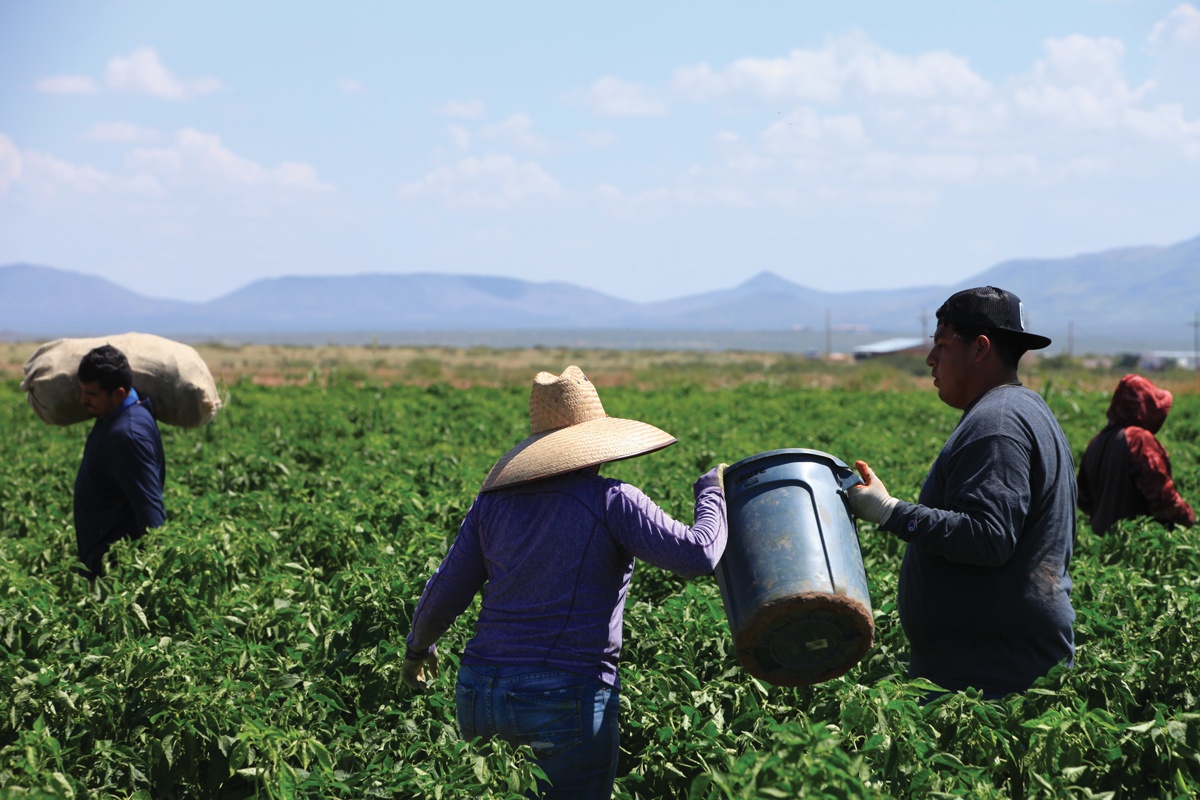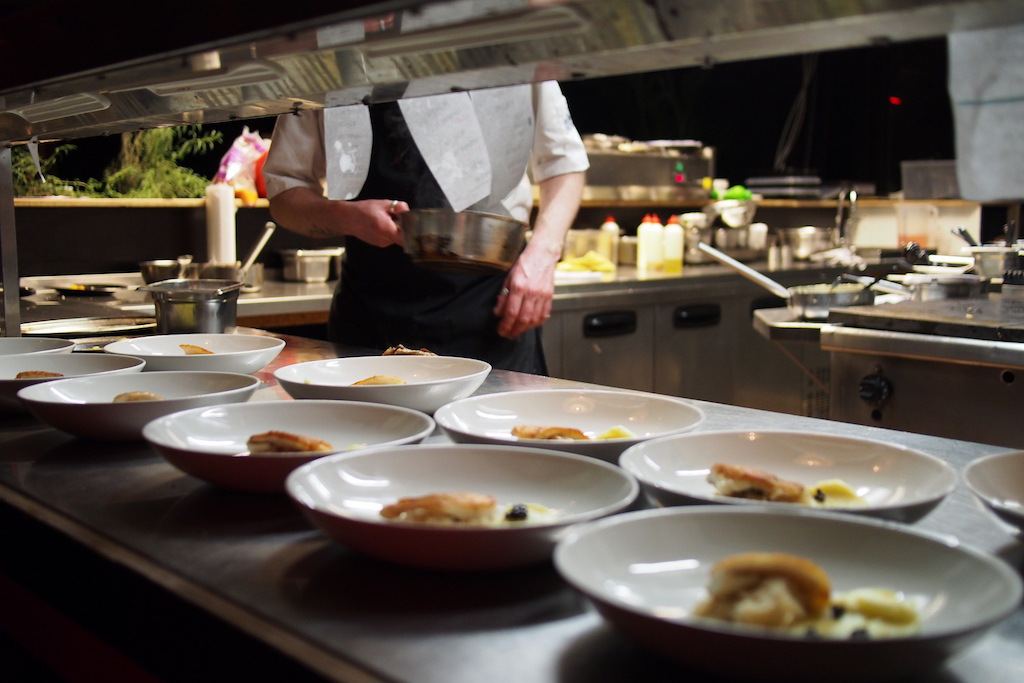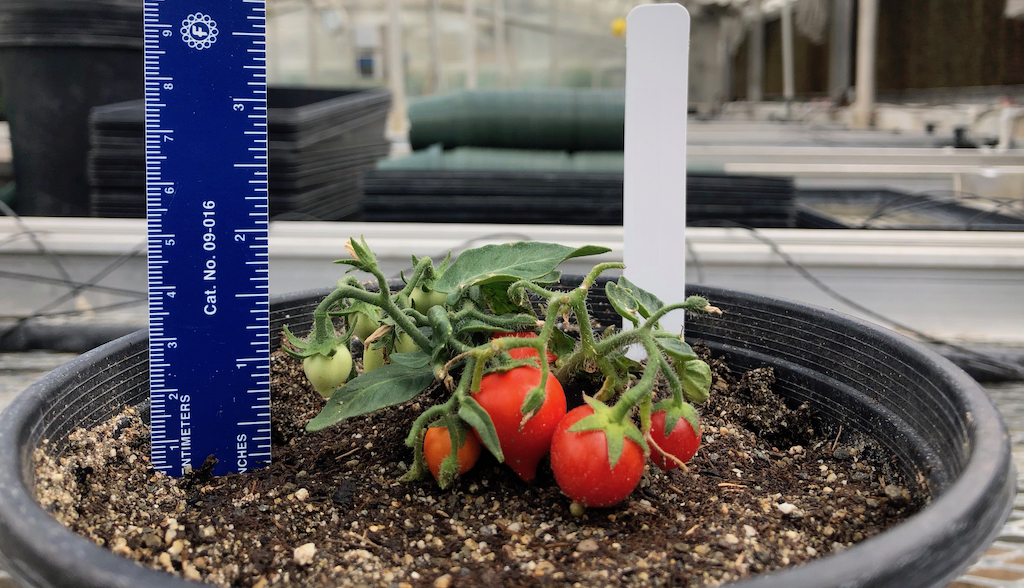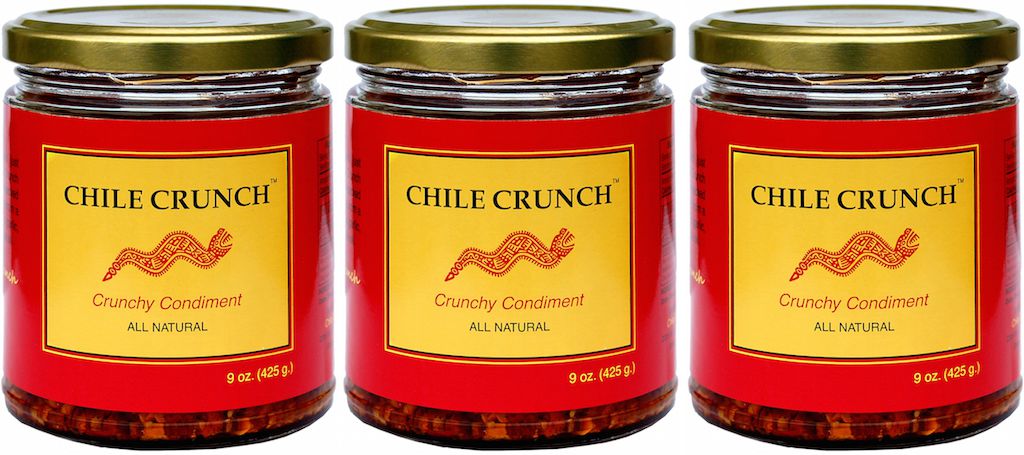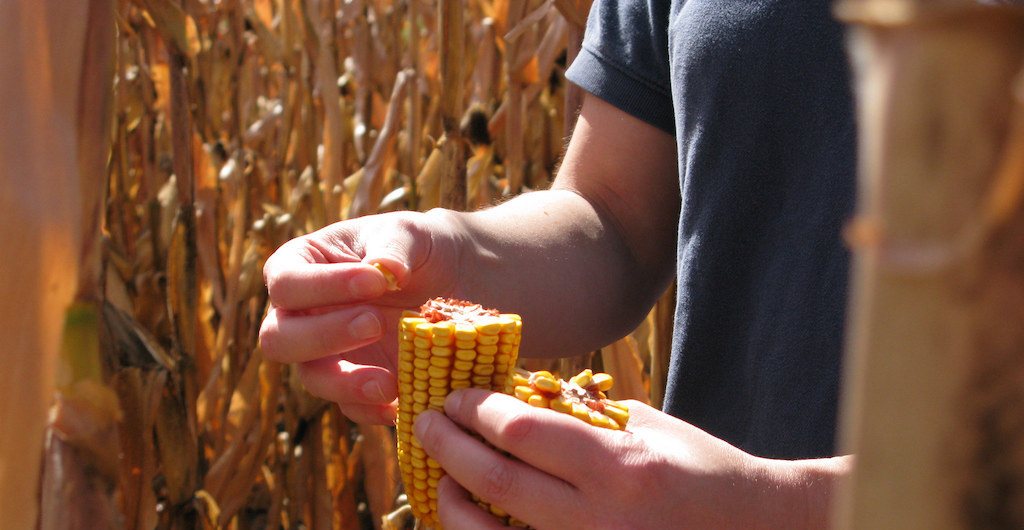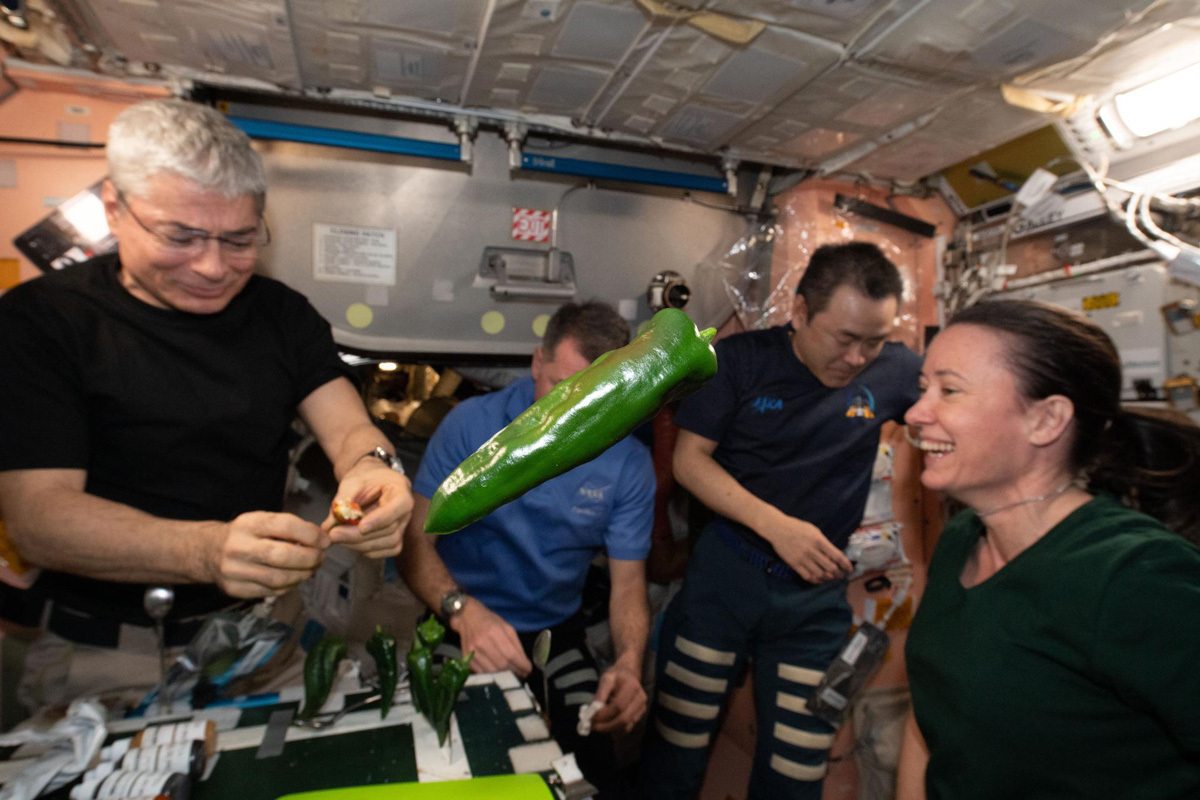
Courtesy of NASA
A NASA mission to harvest Hatch green chiles in space just might help farmers on earth adapt their growing methods.
This story was originally published at High Country News (hcn.org) on Oct. 25, 2021.
Pictured above: A Hatch Green chile floats above a cutting board as Expedition 66 crew members conduct a taste test after the first harvest in October. A new crew of astronauts will take over the crop when they arrive at the orbiting laboratory, and will conduct a final harvest of the peppers in late November.
As the chile season winded down in New Mexico’s Hatch Valley, the harvest continued 250 miles above earth on the International Space Station. In a first for space gardening, an astronaut picked exactly seven mature peppers in late October. On social media, the American crew, along with their international colleagues, celebrated the harvest and shared photos and videos of the dark-green fruits floating in microgravity, where people and objects appear to be weightless. They even threw a taco party seasoned by the inaugural crop of space-grown chiles.
Their journey started in the summer when 48 chile seeds boarded a spacecraft at the Kennedy Space Center in Florida. After entering the International Space Station, they were transferred to an oven-sized growth chamber, where LaShelle Spencer, the project’s science team lead, and her colleagues at the National Aeronautics and Space Administration (NASA) remotely controlled lighting, temperature and irrigation. Over the course of a few months, the astronauts on board trimmed the plants, removed debris and managed the miniature chile field.
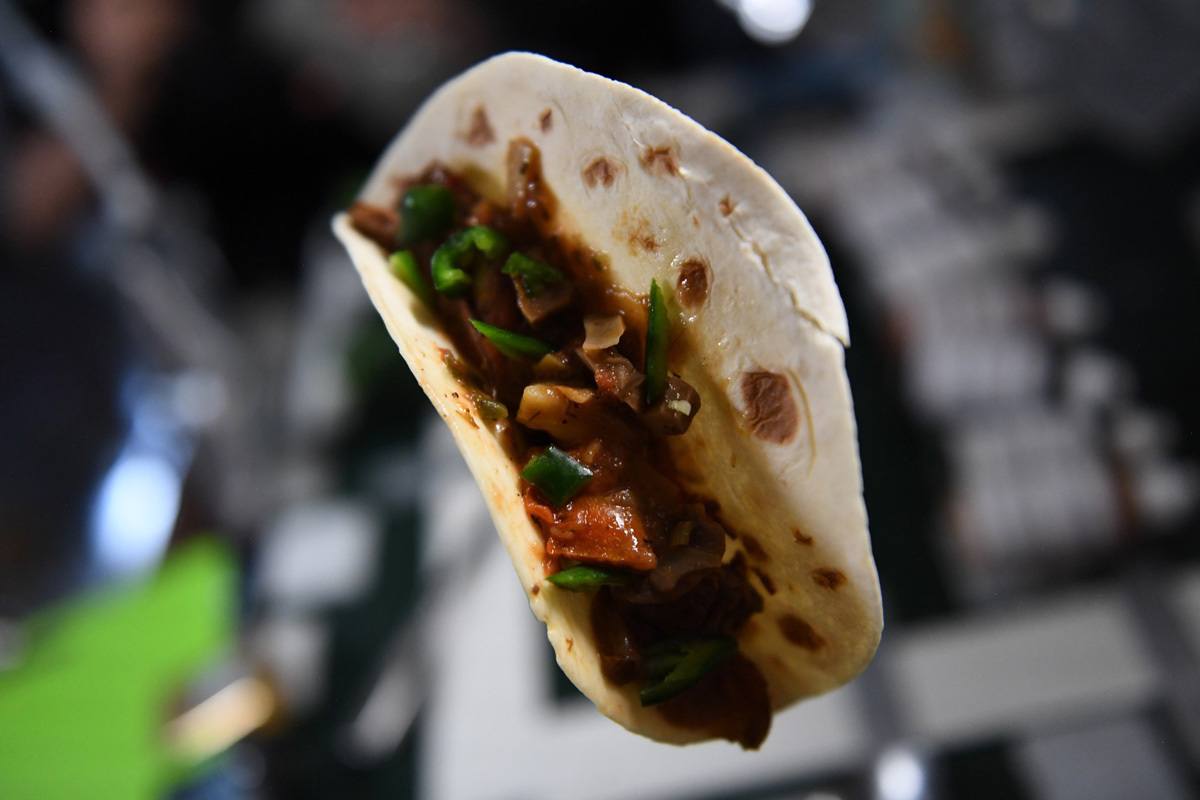
A taco made by ISS astronauts uses fajita beef, rehydrated tomatoes and artichokes, and freshly harvested New Mexico chile peppers.
Courtesy of NASA
“It was a real treat for us,” said NASA astronaut Megan McArthur during a press call she took in space. “We could come and smell the plant, and see the chiles growing. So it’s really been a nice morale boost, as well as an interesting science project.”
The ongoing chile experiment, nicknamed “Hatch to ISS” by NASA, is part of a larger effort to explore the possibility of growing more fresh fruits and vegetables in space to supplement the astronauts’ packaged food-infused diet. The experiment is one of the most challenging to date because of the long germination and growing time of Capsicum annuum, the scientific name for chile peppers.
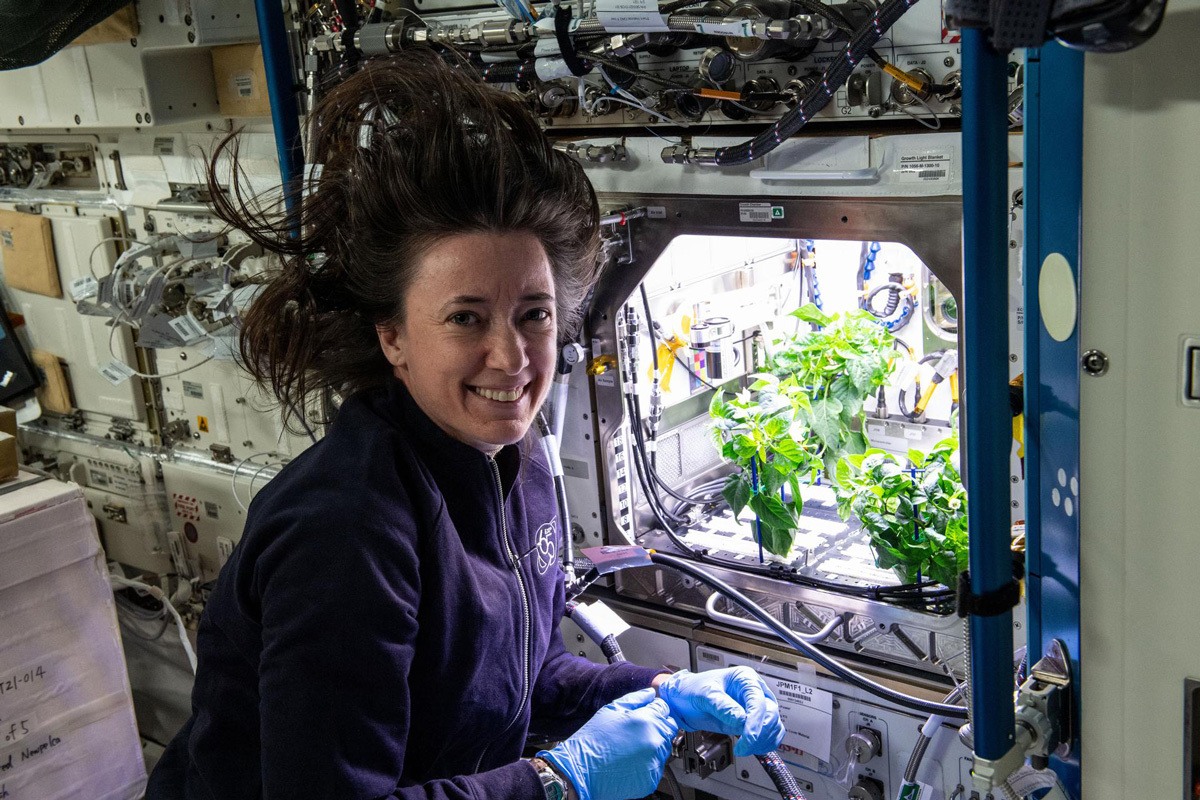
Megan McArthur, NASA astronaut and Expedition 65 flight engineer, cleans up debris in the International Space StationÕs Plant Habitat, which is growing Hatch Green chiles for a space crop experiment. The chile peppers started growing on July 12, 2021. The experiment is one of the longest and most challenging plant experiments attempted aboard the orbiting laboratory.
Courtesy of NASA
Jacob Torres, a technician and horticulturist with NASA hailing from northern New Mexico, helped evaluate the seed used in the experiment. It’s called NuMex Española Improved, and is an early-maturing, medium-heat variety that is widely cultivated around Hatch, New Mexico. In the testing phase, this pepper outperformed other contenders in its ability to adapt to high levels of carbon dioxide and the microgravity of outer space while maintaining a desirable flavor and nutrition profile. “Not only did it have a champion in New Mexico, but it also did very well during our screening tests in a space cabin-like environment,” said Spencer.
Torres felt proud to work on the project. “To be part of this team and work on the New Mexican chiles I grew up eating really means everything to me,” he said in a video interview. And the space experiment surpassed his expectations. “Our mission was to grow one pepper. One successful pepper. And now we had seven in just the first harvest,” Torres added.
“Our mission was to grow one pepper. One successful pepper. And now we had seven in just the first harvest.”
Another harvest will take place just after Thanksgiving, according to Spencer. Among that new batch of peppers, some will be sent back to earth for a nutritional and food safety analysis. Spencer is unsure if microgravity will add a unique flavor to the signature medium heat, but she thinks the experiment will advance the technology for growing chiles in controlled, indoor settings that use significantly less water.
“When we were touring New Mexico to select seeds, farmers in Hatch told us that they were worried about the impact of climate change and the drought on their chiles,” Spencer said. “Perhaps a controlled environment with limited water and electricity input, like the one we have up there, could save the chiles.”

